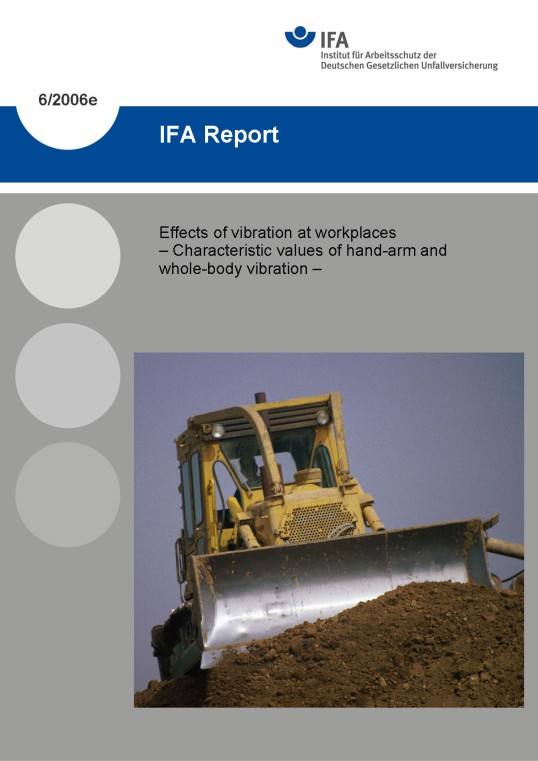- Database publications
- Reports - Download
- Latest publications
- Focus on IFA's and IAG's work
- IFA-Handbuch
- IFA-Arbeitsmappe Messung von Gefahrstoffen
- Gefahrstoffe - Reinhaltung der Luft
Effects of vibration at workplaces – Characteristic values of hand-arm and whole-body vibration (IFA Report 6/2006e)

Front cover of IFA Report 6/2006e
Source: DGUV
Abstract: The effects of vibration when working with handheld and hand-guided devices (Hand-Arm Vibration – HAV) and when driving mobile work machines and vehicles (Whole-Body Vibrations – WBV) can endanger the health and safety of employees. Damage to bones and joints and circulatory problems in the hand and arm systems as well as disc damage to the spine as a result of the effects of vibrations are recognised occupational diseases. Since the entry into force of the EC Vibration Protection Directive 2002/44/ EC in 2002 there has been an obligation on companies throughout Europe to assess the risks of jobs with vibration. The statutory provisions and their implementation in Germany are explained in this Report. It supports companies in identifying and assessing the risks and in choosing appropriate preventive measures by providing tables with data. It describes the key data of the EC directive, which are not identical to the key data previously used in Germany to assess vibration. Conversions of these key data into the new key data systems are explained using practical examples. Software available on the internet to identify the assessment key data can also be used to plan technical and organisational preventive measures. Annexes 1 and 2 to the Report bring together key data ranges for many devices, work machines and vehicles relevant to vibration. Annex 3 includes the measurement results for the vibration-reducing effect of seats on mobile machines and vehicles as a preventive measure to aid choice for WBV.
Bibliographic data

Christ, E.; Fischer, S.; Kaulbars, U.; Sayn, D.:
Effects of vibration at workplaces – Characteristic values of hand-arm and whole-body vibration. IFA Report 6/2006e.
Ed.: Hauptverband der gewerblichen Berufsgenossenschaften (HVBG), Institut für Arbeitsschutz der DGUV (IFA), Sankt Augustin 2010.
ISBN: 978-3-88383-851-9
